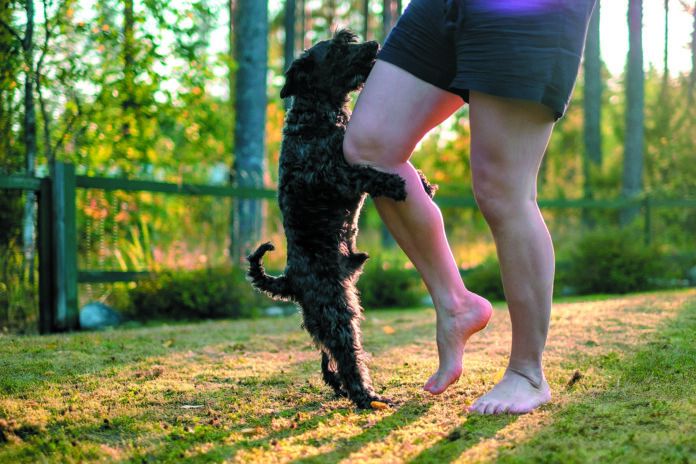You may recall seeing in the news several months ago that a couple relinquished their dog to a shelter when he humped another male dog because they did not want a gay pet. The dog now lives a good life after having been adopted by a same-sex couple. But it raises the question: Are dogs who hump dogs of the same sex actually gay?
Why dogs hump
For a long time the scientific community frowned on anthropomorphizing, that is, ascribing human emotions and motivations to dogs. But the research community has been coming around to the fact that dogs experience love, jealousy, and other emotions just as people do and often act on them, as well. There is one area, however, where anthropomorphizing can lead us to misconceptions about canine thinking and behavior: sexual attraction and sexual orientation.
Dogs don’t have a mental framework for sexual orientation. Sexual preference is a human social construct that does not apply to our canine friends. Furthermore, for dogs, humping another dog is not necessarily about sex.
social construct that does not apply to our canine friends. Furthermore, for dogs, humping another dog is not necessarily about sex.
Consider that puppies begin humping, or mounting, other dogs as young as the age of 6 weeks, when they are able to gain control over their legs. And if a dog is a mounter, that behavior may very well continue into adulthood, whether or not the dog is neutered or spayed. Most of the time, the mounting isn’t about copulation. In fact, dogs are not particular about the object of their attention. Males will mount both females and males; females will mount males and females. Both genders will mount stuffed animals, throw pillows, people, blankets, table legs, and the list goes on. What are the reasons, when the reason is not to propagate the species?
1. It feels good. And dogs do not have our sense of decorum. “Behind closed doors” isn’t part of their code of manners.
2. Say hello. Some dogs will mount another dog — or person — in greeting. They may feel over-aroused, albeit not sexually, and use the humping to dissipate some of that emotion.
3. Play. Mounting can be a form of roughhousing that some dogs find fun.
4. Assert social dominance. Mounting another dog can be a way of showing, literally, who’s on top.
5. Relieve stress or anxiety. As with people, a physical release of tension can facilitate an emotional release.
6. Attention seeking. Mounting is a very effective means of getting a person’s attention. People invariably (and understandably) react when a dog mounts, which inadvertently rewards the dog.
7. Medical problem. Sometimes, humping does not have behavioral roots but medical ones. Urinary tract infections, urinary incontinence, priapism (persistent, often painful erections), and skin allergies can all influence a dog’s mounting behavior. If trying to hump other dogs or objects is preoccupying your pet, you should take him or her to the veterinarian to rule out — or diagnose and treat — a medical condition.
When the mounting is not well received
While people might turn red and spill out apologies and start yelling at their dog for humping another person’s dog, the dog being humped is not usually upset. The discomfort is almost always the human’s. That said, not all dogs appreciate being humped and will let mounters know the humping is not welcome.
Not all people appreciate their dog being humped, either. Even if the dog does not mind it, they want your dog off their animal.
The best thing to do is keep the peace by complying. But how?
- Redirect your dog’s behavior. Often there are warning signs that a dog is going to attempt to mount another dog — or a person. He’ll sidle up and start panting or licking or rubbing. That’s your cue to throw your dog a desired treat, or toss a ball for him to catch, or perform a trick that always comes with praise and a food reward. You can also use the opportunity to “casually” come and stand between your dog and the other one.
- Be Proactive. If your dog usually greets people by jumping or humping, teach an alternative behavior such as sitting or bringing a toy. Reward the dog with attention for making the better choice.
- Make sure your dog gets lot of physical activity in general. The more opportunities for exercise that you give your dog and the more you spend time with him engaging in fun games and walks together, the less he will feel the need to relieve tension or anxiety in a way that some other dogs, and people, find socially unacceptable.






